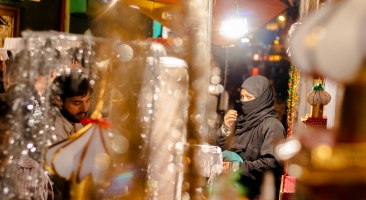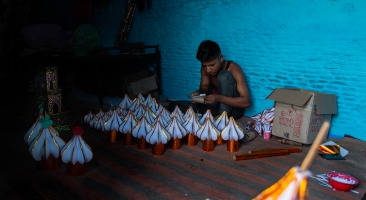A taziya, made in numerous forms and types, is a mausoleum of Imam Hussain, the grandson of Prophet Muhammad, who was killed with about 100 of his men in the battle of Karbala in AD 680 by the then Syrian ruler Yazid’s army. Though the literal meaning of taziya comes from the Arabic word aza, which translates to commemorating the dead, taziyat means paying condolence, homage and respect to the deceased.
It is believed that the Mongol ruler Taimur started the trend of taziya at the end of the fourteenth century. From a mud replica of Imam Hussain’s mausoleum given to him in Karbala, Taimur developed a taziya and asked his men to offer their condolences to Imam Hussain. The practice soon became popular and people began making replicas of the mausoleum with varying craft and skill to observe Muharram.
Taziye (plural for taziya) have come a long way since its heydays when the nawabs of Awadh patronised their making and commissioned elaborate taziye made from ivory, ebony, gold and silver. Nowadays, taziye are made from cardboard, bamboo and metals as well as the oddly surprising barley. They also come in various sizes, from palm-sized mannati (prayer) taziya to the 100-feet tall ones that take part in grand Muharram processions.
Generations of taziya makers make taziye every year just before Muharram in their workshops as well as homes. Just a day before Muharram, people buy taziye and place them in their private and communal places of worship. People adorn their taziye with incense sticks and flowers and for mourning traditions. A taziya can be kept in the house for as short a period as a night and as long as a couple of months before being buried in karbalas (burial grounds) following rites and rituals that weren’t allowed to the martyrs who were killed in the battlefield. Thus, within the space of a few months, a taziya completes its journey from its birth to life at a home to its burial. This journey can also be seen as the taziya’s transformation from an economic commodity to a holy article.






